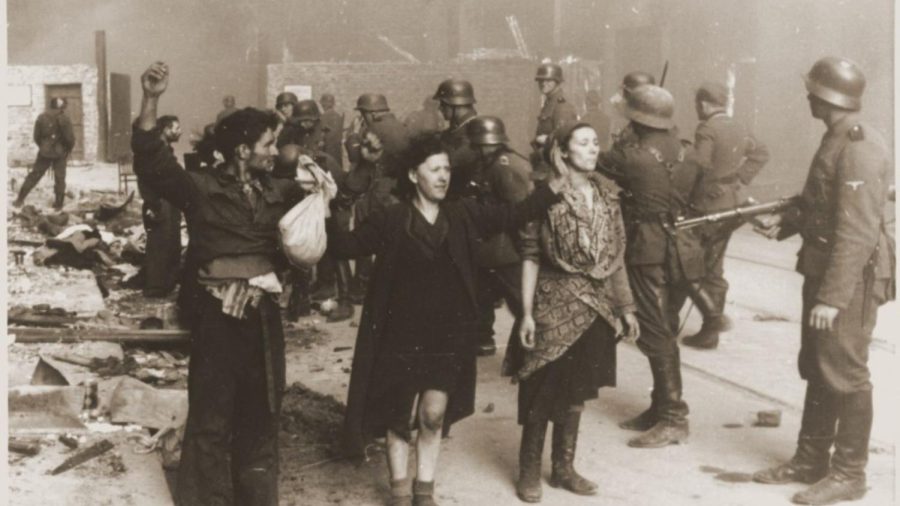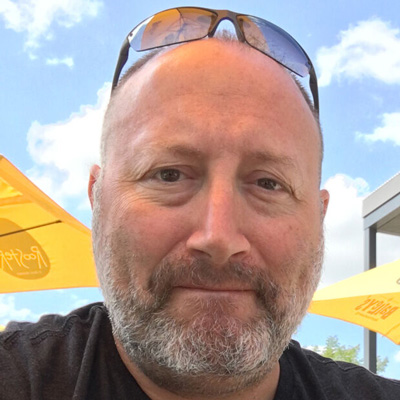How to honor and learn about the unsung heroines of the Warsaw Ghetto Uprising
Jewish resistance fighters who were captured by SS troops during the Warsaw ghetto uprising. Warsaw, Poland, April 19-May 16, 1943.
The original German caption reads: “These bandits offered armed resistance.”
United States Holocaust Memorial Museum, courtesy of National Archives and Records Administration, College Park
Published April 14, 2023
The Warsaw Ghetto Uprising was one of the most famous acts of Jewish rebellion during the Holocaust. April 19 marks its 80th anniversary, which will be remembered with events planned across the world.
The Jewish Women’s Archive (JWA) is marking the date by reminding us that it was not just men who participated in the resistance work within the ghetto or the uprising itself. Women from varying backgrounds also played key roles, and some participated in combat.
To better understand the lives of the women in the Ghetto, JWA is partnering with the POLIN Museum of the History of Polish Jews to create a special spring experience focusing on women’s lives and resistance in the ghetto. Everyone is invited to participate. Register here.
The Jewish Light recently spoke with Betsy More, director of programs for JWA about the upcoming program.
What was daily life like for women in the ghetto?
Grueling. Hunger and disease killed thousands every month in the overcrowded ghetto; Nazi policy was to keep food, medicine and medical and hygienic supplies in desperately short supply.
Against these conditions, women tried to keep themselves and their loved ones alive – preparing what food they could get, trying to keep their living quarters clean, nursing the sick as best they could in living quarters with 8 to 10 people per room. Children and adults alike traded anything they could for food.
Against this backdrop of suffering, many organized to fight back, both in armed combat and through other means of organized resistance.
Can you describe these women who joined the resistance?
The women and girls who joined the resistance had typically been involved in organized activity before the war, especially in Jewish socialist, anarchist, communist and Zionist groups, all of which included an ideology of gender egalitarianism to a greater or lesser extent. Most were young, in their teens and twenties.
What forms did their resistance take? Leadership roles?
Women’s resistance took multiple forms: organized smuggling of weapons and food; information gathering; documenting the brutality of the ghetto in diaries and underground archives; organizing and leading resistance groups; and, less frequently, fighting Nazis in armed combat. The prevalence of women’s leadership in organized resistance groups was unusual. They shaped strategy, served as liaisons and couriers between groups, recruited and trained new members.
Why is it important that these women and their stories be honored and remembered?
These young women demonstrated tremendous courage, intelligence, shrewdness and effectiveness in their resistance to Nazis and Naziism. For decades, their actions were downplayed in comparison to their male comrades, including by the women themselves. When we write them back into their rightful place in history, not only do we honor their memories and expand the universe of historical role models for girls and women, but we gain a more rich, nuanced and accurate understanding of our own history.
Looking at women’s experiences prompt us to redefine the very notion of resistance, which was long assumed to include only armed combat. Seeing the many ways in which women fought back against Nazi oppression expands our understanding of how all Jews resisted.
What would you say to someone interested in taking these online courses?
This course will open new window into lives and personalities of the individual women whose courage in confronting evil and protecting their communities and loved ones was immeasurable. Learn with scholars and activists who are expanding our understanding of what women’s resistance looked like in the past and how it can inform the fight for women’s freedom against reactionary forces in the present day.
Upcoming Dates:
Tuesday, April 18, 12 PM ET: Warsaw Ghetto Through Women’s Eyes, with Katarzyna Person
Discover the history of the Warsaw Ghetto from the perspective of women who lived and died there, including writers, students, vegetable sellers, and homemakers. Their experiences, choices, and fates make up a complex chapter in the history of the Holocaust. Katarzyna Person is an assistant professor at the Jewish Historical Institute in Warsaw. She is the editor of the complete edition of the Ringelblum Archives and author of several books.
Tuesday, April 25, 12 PM ET: Rachela Auerbach at the Frontline of the Struggle, with Karolina Szymaniak
Polish Yiddish writer Rachela Auerbach was a member of the underground ghetto Ringelblum Archive. Learn about her work for Jewish social self-help, her documentation efforts as a means of civil resistance and her post-war works on the Warsaw Ghetto Uprising. Karolina Szymaniak is an assistant professor at the University of Wrocław and research fellow at the Jewish Historical Institute in Warsaw. Her edited collection of Auerbach’s ghetto writings received the 2016 Polityka History Award.
Tuesday, May 2, 12 PM ET: Dorka Goldkorn and other Communists in the Ghetto, with Joanna Ostrowska
The Warsaw Ghetto’s female fighters, especially those of communist leanings, have been mostly forgotten. Dorka Goldman’s life offers a window into their collective story, giving a unique glimpse into the lives of young Jewish women involved in the radical leftist movement before World War II. Joanna Ostrowska researches forgotten victims of the Holocaust and the queer history of World War II. She is the author of “Unmentioned: Sexual Forced Labor During World War II.”
Tuesday, May 9, 12 PM ET: The Interwar Roots of Military Resistance of Jewish Women in the Ghetto, with Katarzyna Czerwonogóra
During the Nazi occupation of Europe, Jewish women took on new roles as military fighters. Explore the background of women in the resistance, including preparation in the Zionist movement and new models of Jewish femininity that emerged in interwar Poland. Katarzyna Czerwonogóra is a scholar of Jewish women who lives in Jerusalem and Warsaw. She studies local and international mobilization of Zionist women in Germany and Poland.
Tuesday, May 16, 12 PM ET: Herstories of Resistance, with Zuzanna Hertzberg
How did Jewish women acquire skills to fight oppression during the Holocaust? Trace their resistance to its roots in 19th-century anarchist groups and interwar anti-fascist international Brigades. How can these women’s strategies be applied to contemporary battles? How can we move the archive into the streets? Zuzanna Hertzberg is a Polish-Jewish interdisciplinary artist, activist, and research. She is interested in the interweaving of individual and collective memory, the restitution of minority heritage, and the marginalization of uncomfortable narratives.
| RELATED: Jewish doctors in the Warsaw Ghetto secretly documented the effects of Nazi-imposed starvation
















